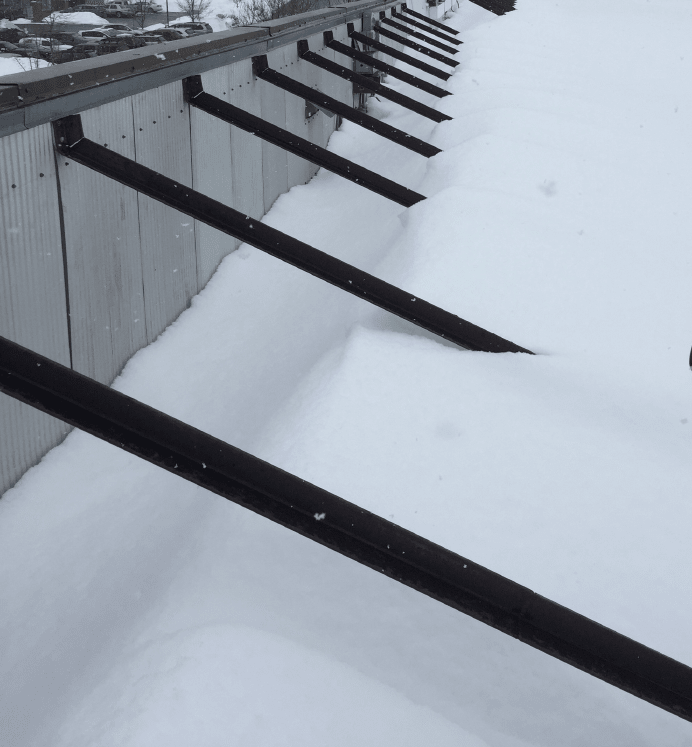I rarely work in heavy snow areas but I recall years ago a PEMB having to have additional wall girts because of snow drift accumulation. They in fact called them "snow girts". So at one time, there was some calculation of lateral pressure from snow. I do not know if research has determined it was not needed but I remember at one time it was used. Probably PEMB participants will have some information on this practice.
As I recall, the additional girts were placed in the lower part of the drift. I also remember the calculation contained a triangular pressure similar to soil other than the magnitude. As I recall, the vertical offset of the roofs was about 20' but I am not sure about the height of drift. Both buildings that met to create the drift were fairly wide.



